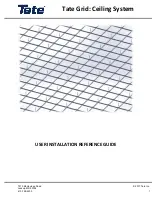
8. DO NOT ALLOW CHILDREN UNDER THE AGE OF 18 TO USE THE HYDRAULIC
EQUIPMENT.
9. DO NOT OPERATE HYDRAULICS WHILE OPERATORS ARE WORKING WITH THE
CATTLE IN THE CRUSH OR ARE TOUCHING THE CRUSH. REACHING OUT OR INTO
THE CRUSH WHILE HYDRAULICS ARE IN OPERATION CAN RESULT IN SERIOUS
INJURY.
10. Please ensure that all hydraulic hoses and electrical leads are out of the way and safely
positioned before moving cattle or using the crush.
11. Keep a distance of more than an arm’s length from the hydraulic crush while hydraulics are in
operation.
RISK ASSESSMENT
Conduct a risk assessment on procedures for which the equipment is used and establish a safe
work procedure.
1. Ensure all users of the equipment have been inducted and comply with safe working
procedure.
2. Ensure that the equipment is on firm, level ground.
3. Ensure that there are NO hazardous hydraulic cords or large objects within or around the
equipment where cattle and operator will be.
4. Please ensure that all hydraulics work properly before putting cattle through the crush.
5. Please make sure that all hydraulic hoses are properly secured to the hydraulic pump or
tractor.
6. Ensure that the hydraulic controls are functioning properly. Specifically ensure that the
adjustable side mechanism and the yoke gate are adjusting smoothly.
7. If hydraulics do not function properly when testing the equipment, DO NOT put cattle
through the crush.
8. Ensure that access gates are closed securely before running cattle through the crush.
9. Some chemicals and medicines can damage powder coat. Take all precautions and wash
after use.
10. Make sure your equipment has been cleared of ALL livestock after use.
11. Some chemicals and medicines can damage powder coat. Take all precautions and wash
after use.
12. Maximum towing speed 40km/25mph
13. Maintain tire pressure of 80 psi.
14. Check wheel lug nuts after 10, 25, 50 miles of use, ensure torqued to 120 ft. lbs.
a. This applies to first time use and wheel changes.
RISK ASSESSMENT | 2






































